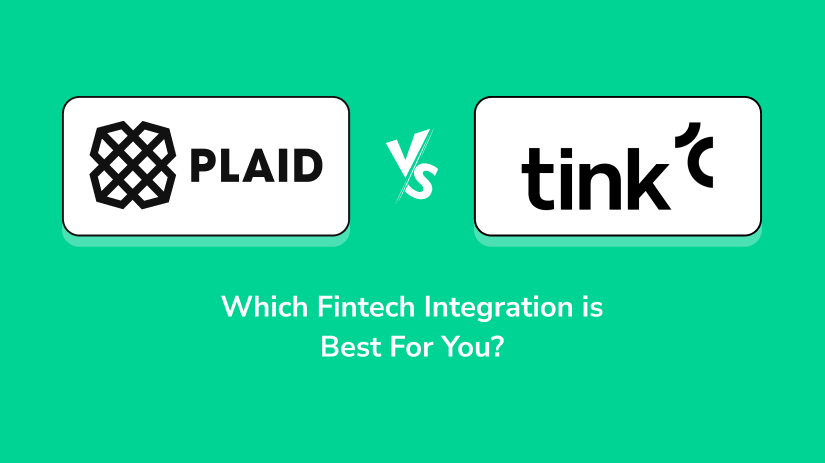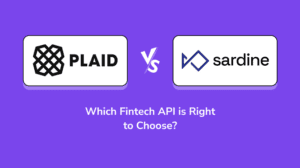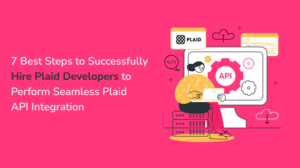The need for financial data integration has become important in this rapidly evolving fintech landscape. Plaid and Tink are the two popular companies that provide API integration to connect banks and financial institutions with apps and services.
Understanding the differences between these platforms can help businesses make informed decisions about which integration is best suited to their needs.
Let’s Begin!!
What is Plaid?
Plaid is a technology platform that enables applications to connect with users’ bank accounts. Founded in 2012, Plaid has become a trusted name in the fintech industry, serving thousands of companies worldwide.
Services Offered by Plaid
Plaid development services include multiple features such as transaction data, identity verification, and account authentication.
This fintech API allows Plaid developers to seamlessly integrate banking features into their applications, enabling functionalities such as payment processing, account balance checks, and financial planning tools.
As we discussed about Plaid, let’s see an overview of Tink development!
Connect with us for Fintech Development Needs
Trusted by companies like Plaid, Yodlee, Codat.
What is Tink?
Tink is another prominent player in the fintech integration space. Established in 2012, Tink provides APIs that facilitate access to financial data, empowering businesses to build innovative solutions for their customers.
Services Offered by Tink
Similar to Plaid, Tink integration services include account aggregation, transaction categorization, and personal finance management tools.
Its fintech API enables Tink developers to create custom solutions tailored to their users’ financial needs.
Comparison of Plaid vs Tink
Let’s see all the factors that matter while choosing the fintech API for your financial software solution.
Features Comparison
Both Plaid and Tink offer similar core features, such as account connectivity and transaction retrieval. However, there are some differences in the specific capabilities offered by each platform.
Integration Capabilities
Plaid and Tink both support integration with a wide range of financial institutions, but the ease of integration may vary depending on the specific requirements of the application.
Data Security
Data security is a top priority for both Plaid and Tink. Both companies employ robust security measures to protect users’ financial information, including encryption, tokenization, and regular security audits.
Pricing Structure
Plaid and Tink have different pricing models, with fees typically based on factors such as the number of API calls, the volume of data processed, and the level of support required.
Connect with us for Fintech Development Needs
Trusted by companies like Plaid, Yodlee, Codat.
Use Cases for Plaid
Who Should Use Plaid?
Plaid is well-suited to a variety of use cases, including personal finance apps, budgeting tools, online donation software, and payment platforms. Its flexible API and comprehensive feature set make it a popular choice among fintech developers.
Industry Applications
Plaid is widely used across various industries, including banking, lending, wealth management, and e-commerce. Its versatile platform can be adapted to meet the needs of businesses of all sizes.
If you are also looking for Plaid API integration to your financial solution, then you must hire Plaid developers from ProtonBits. We have a team of proficient Plaid developers and offer the best ongoing and post-development support.
Use Cases for Tink
Who Should Use Tink?
Tink is ideal for businesses looking to leverage financial data for innovative purposes, such as personalized recommendations, risk assessment, and fraud detection.
Its advanced analytics capabilities make it a valuable tool for companies seeking deeper insights into their customers’ financial behavior.
Industry Applications
Tink is particularly well-suited to industries such as retail banking, investment management, and insurance, where data-driven decision-making is essential for success.
Its flexible API allows businesses to create tailored solutions that address specific industry challenges.
Connect with us for Fintech Development Needs
Trusted by companies like Plaid, Yodlee, Codat.
Pros and Cons of Plaid
Advantages of Plaid

- Established reputation in the industry
- Wide range of supported financial institutions
- Comprehensive feature set
Disadvantages of Plaid
- Pricing may be prohibitive for smaller businesses
- Integration process can be complex for inexperienced developers
Pros and Cons of Tink
Advantages of Tink

- Advanced analytics capabilities
- Flexible API for custom solutions
- Strong emphasis on data privacy and security
Disadvantages of Tink
- Relatively newer player in the market
- Limited support for some regional financial institutions
- Choosing the Right Integration for Your Needs
Factors to Consider for Choosing Between Plaid vs Tink
When evaluating Plaid vs Tink, businesses should consider factors such as their specific business goals, budget constraints, and technical requirements. By carefully assessing these factors, businesses can determine which integration is best suited to their needs.
Business Goals
Consider what you aim to achieve with the integration. Are you looking to streamline operations, improve customer experience, or gain insights into financial data?
Budget Constraints
Evaluate the cost of each integration, including setup fees, subscription costs, and any additional charges for premium features or support.
Technical Requirements
Assess the technical expertise of your team and the complexity of the integration process. Consider whether you have the resources and capabilities to implement and maintain the integration effectively.
Conclusion
In conclusion, both Plaid and Tink offer powerful solutions for integrating financial data into applications and services.
By understanding the unique strengths and weaknesses of each platform, businesses can make informed decisions about which integration is best suited to their needs.
Happy Fintech API Integrations!!
Frequently Asked Questions (FAQs)
1. Is Plaid or Tink better for personal finance apps?
Both Plaid and Tink are suitable for personal finance apps, but the choice depends on specific requirements and preferences.
2. Does Tink support integration with international banks?
Yes, Tink offers support for integration with international banks, although availability may vary depending on the region.
3. Are there any hidden fees associated with using Plaid or Tink?
Both Plaid and Tink transparently disclose their pricing structures, but businesses should carefully review the terms and conditions to ensure they understand any potential fees.
4. Can I switch from Plaid to Tink (or vice versa) after integrating with one platform?
While it is possible to switch between integration platforms, it may involve some level of effort and technical expertise to migrate data and update existing systems.
5. Do Plaid and Tink offer customer support for integration issues?
Yes, both Plaid and Tink provide customer support services to assist with integration issues and technical challenges.





